I met Min at my friends Charlotte and Alex de Carcaci, in their old Cheyne Row house, a freezing evening in February of 2012. Having recently moved to England I had been dying to meet the Grande Dame of Decorating so Charlotte organized a dinner to make my wishes come true. I was staying with my hosts that night since I was living in West Sussex at the time, so, before any of the guests arrived I tried to hide my excitement by helping to light candles and open all the bubbly drinks. A few other friends were coming, Carolina Irving who was staying with us too, the Carcacci’s cousin Luisa Beccaria and Gabhan O’Keefe and his partner George Warrington. And just as it should be, we were all there in the garden studio, when the l’invitee d’honneur arrived.
A picture in mauve, with matching dress and head scarf, Min came in holding a small bundle of tissue paper, which, once presented to Charlotte, turned out to be a vase for the roses of future springs. We skipped champagne. Min wanted to go straight to the claret and after she had spent some time warming up around the fire (the Cheyne Row house had proper old-fashioned wood burning fireplaces) we all headed across the garden to the table in the main house’s dining room. It smelled of fresh wood polish and hyacinths in there and numerous candles on the table played with our shadows on the walls. As the English say, heavenly. But alas, although I was seated on Min’s right, for me personally the dinner was a bit of an embarrassment because – besides commenting on how delicious the granita was – I said almost nothing all night. I was star struck.
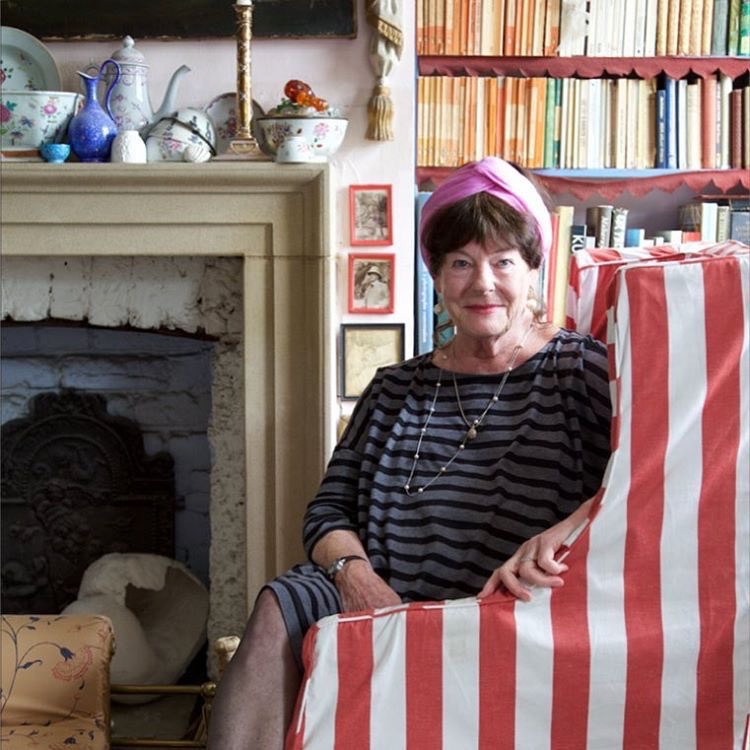
I saw Min again two years later when her friend Pamela Pierce, editor of the American magazine Milieu, asked me to take her portrait for an article. That same ‘frozen state’ came over me the minute I stepped into her top floor apartment near the Brompton Oratory. This time she put me at ease with a mixture of weather talk and naughty smiles and while we got the camera ready Min readied herself on the spot I had chosen for the portrait, a wing chair with an eye catching red and white slipcover. She was radiant, her sparkly eyes, blue and clear as the sky outside, flirty and girly, seeming to enjoy our attention. A minute or two after taking the first few frames I knew I had what I wanted. I stopped. She was surprised but confessed herself relieved all was over. A print hanging on the wall that showed the profile of mountains got us talking about Humboldt, then she showed me The Silk Roads, a book she had just finished reading. Yes, that is what was so extraordinary about her, her wide range of interests and knowledge, the contrasts of her personality, where high and low, erudite and every day, mixed with irreverence and wonder. Believe me, the topic of decorating was really not her only area of expertise. Min was worldly.
I left her house feeling happy that day, and privileged. And relieved, like just having passed the exam. One morning, a few months later, my telephone rang. It was Min. The article had come out, she said, and normally she did not like her portraits but this time she was ringing to tell me that the photo I took of her, that June morning, she approved of, very much. She made my day…
A year later I started to work on Haute Bohemians and, after much self prodding, I gathered courage to ask her if she would allow me to shoot her house in the Canary Islands to include it in the book. I had memories of the vivid hues of her rooms in her Spanish home from an article she had published in Interiors in the 1990’s and I thought it was time to see it again. We met at Daquise, the Polish restaurant in South Kensington, and between courses of borscht and Wiener schnitzels she agreed to let me shoot it.
What follows are images and memories of the four days a friend of mine and myself spent with Min. Two days shooting the house and another two running around the island of Gran Canaria, a time that not only allowed me to get to know her a little bit better, but also to discover a place which we had no idea was so beautiful and interesting, and for which Min had an enormous passion.

Gran Canaria was her second home and she felt pretty much a part of it. She spoke Spanish with the locals – ‘best way to get the town gossip’, loved the people in her village and loved her beautiful house.




And Min being Min became well-learned on the richness of the island’s culture and topography. For me, as someone of Spanish blood, it was touching and humbling to see her moving about her country of choice with the benign and forgiving eyes of those who really love a place. As I said before, Min was worldly, and in that, she was a poet of life as well.
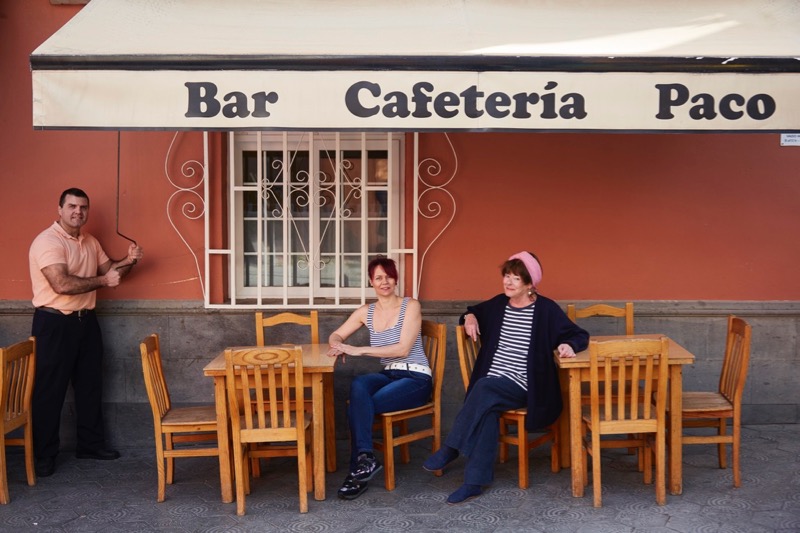
Min in the Canaries: Our first ‘touring’ day began at Paco’s, Min’s coffee place. The cafe was 100 meters away from her house and she loved Paco and his wife and paid them daily visits. I presume her Spanish was learned there amongst the locals, she confessed to me that she loved village gossip so that was the place to get it. En plus the proprietors loved her and always made sure she was treated like the grand dame she was. I often wondered if they ever knew of Min’s accomplishments as well as the high esteem people had for her vision and talent.
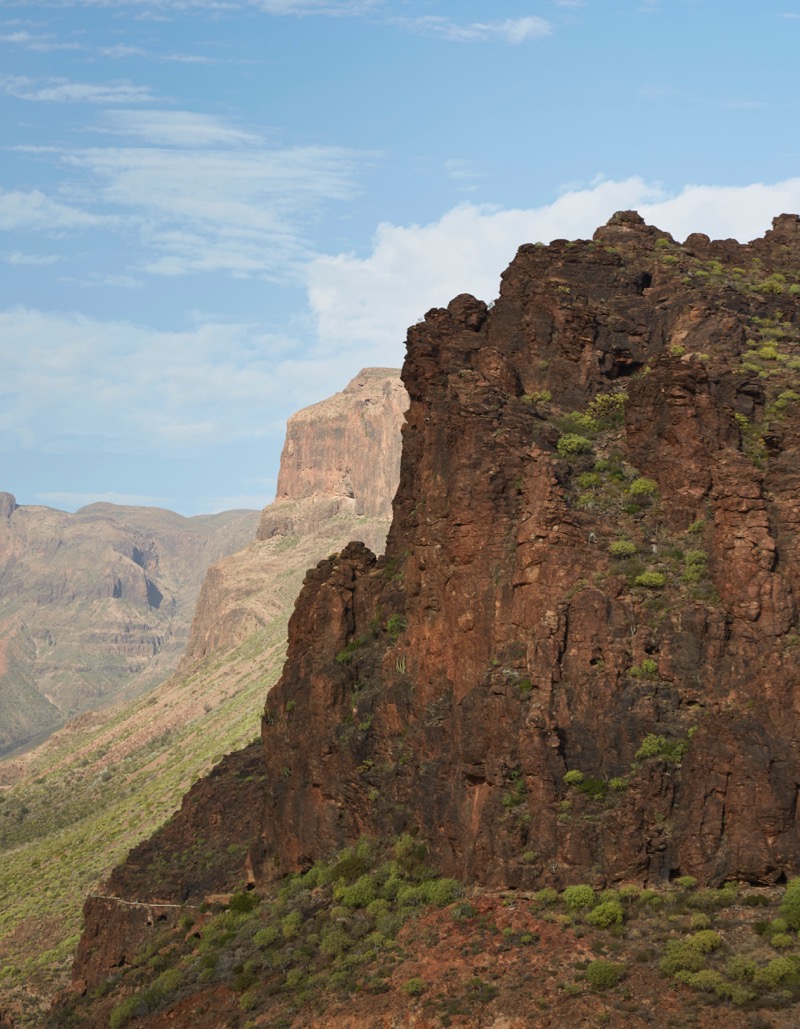
After our cafe con leche chez Paco we headed towards the centre of the island, along roads not for the faint-hearted. Min, on the other hand, did not think twice about asking us to press on the gas. ‘You are going too slow, there is a lot to see’, she would reprimand us impatiently!
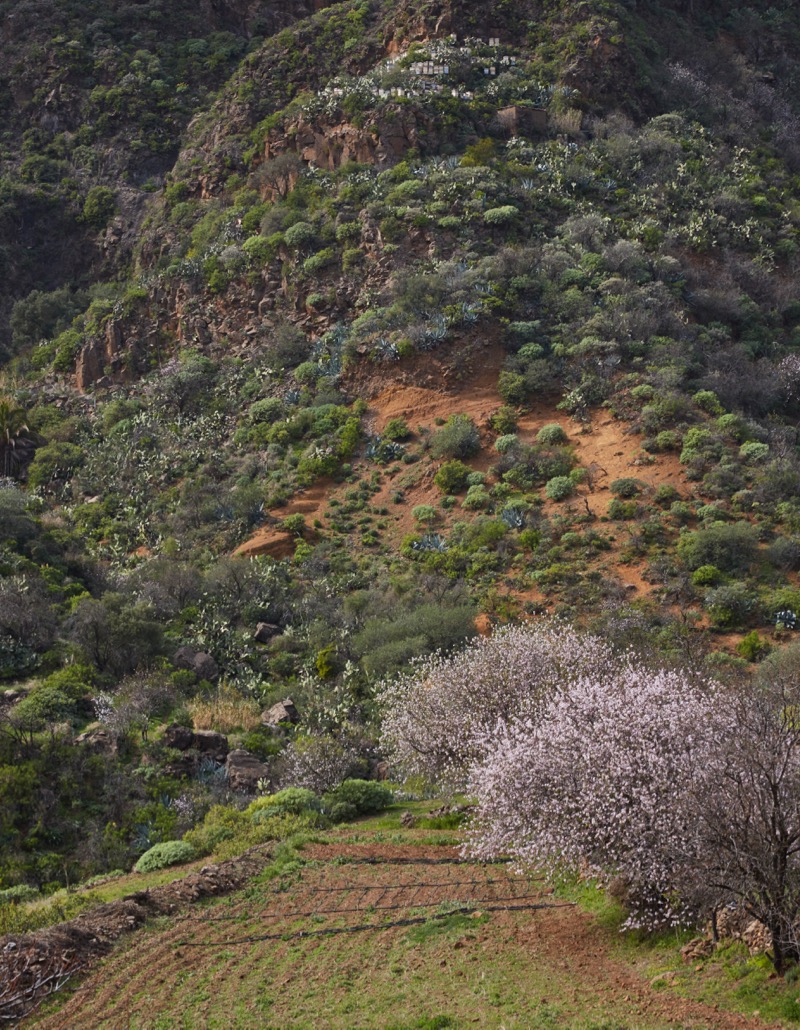
Although it was the middle of January the whole island was abloom. ‘This is our first spring’, Min told me, ‘everything will bloom again in March’. As we climbed up on small country roads we began noticing tiny orchards in the little valleys between steep and jagged elevations. A strange mixture of European flora grew along the wild descendants of plants that must have arrived there on galleons crossing the Atlantic from the newly discovered Americas.

At times Tuscan meadow, the landscape would turn into Jurassic forest at the next turn of the road. Wildly exciting.
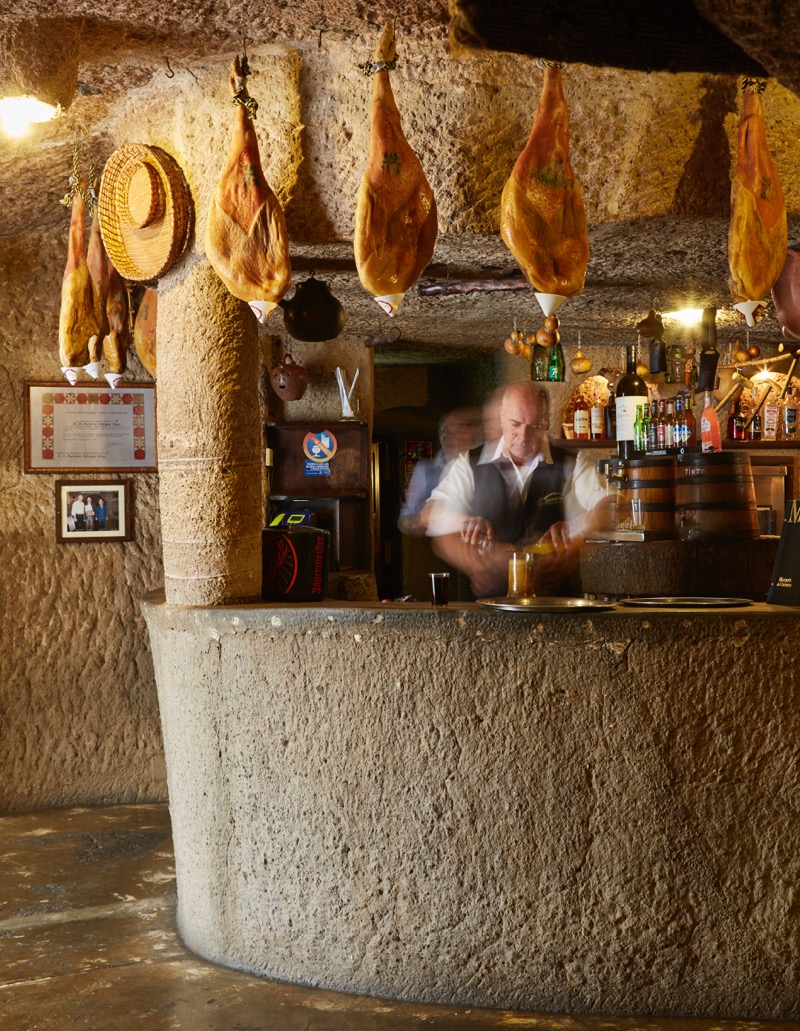
Min wanted us to see a bar at the top of the Guayadeques Pass. Togoror, the bar, was a cave that had been plastered, an endless stream of rooms where locals, mostly, would gather for finos and jamon. Fred Flintstone would have fitted right in! It must have been near midday by the time we arrived there, right on time to get our Jerez on.
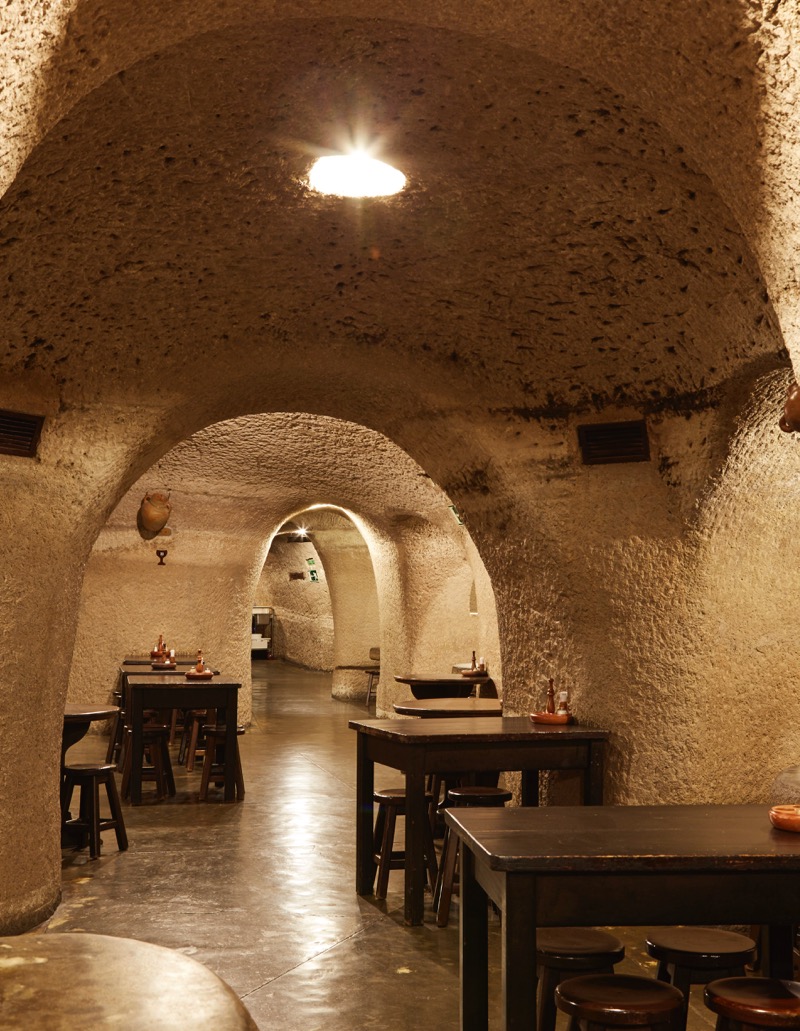
I don’t think Min was much afraid of anything as she insisted on a second round before hitting the (rather treacherous) road again.
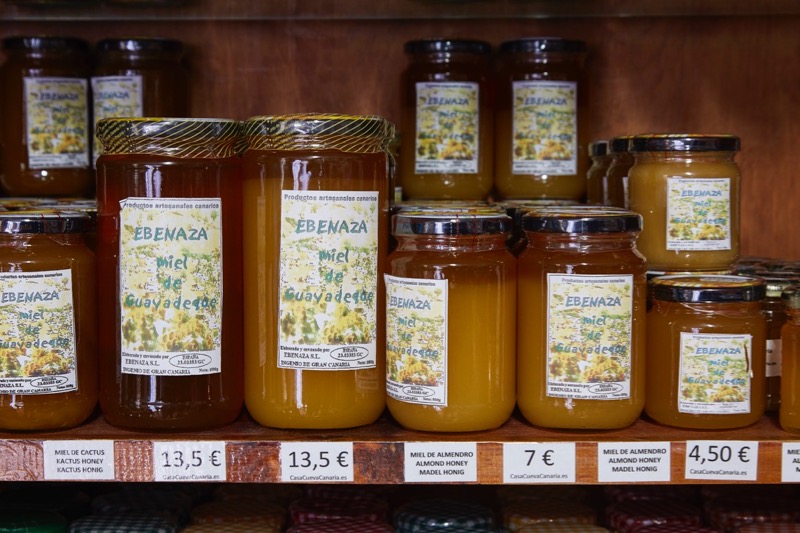
Before leaving Togoror she gave us pots of local honey. We protested saying that she should not do that, that being our guide was more than we could ever ask. Ever Min, she told us with an endearing bossy tone ‘Nonsense, tomorrow I will give you another gift and without this honey, the second gift will be only half as good, so just take the honey and drive!’ As we say in Spanish, ‘donde manda Capitan, no manda marinero’, when the captain is in charge, sailors have no say.
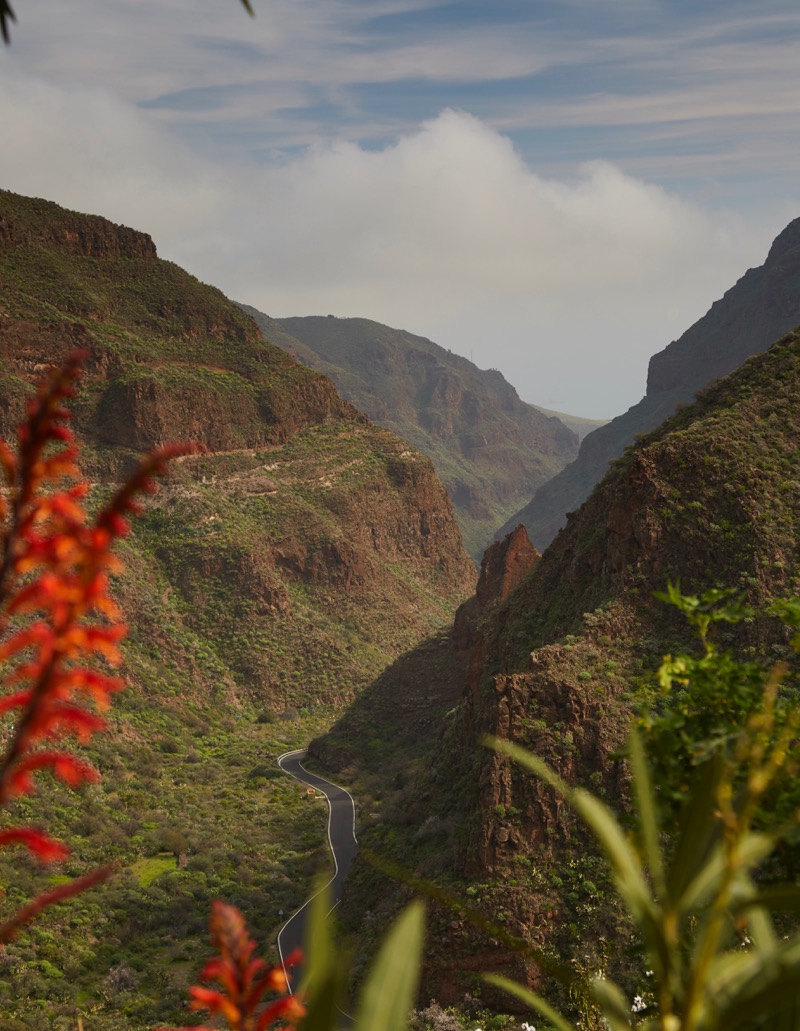
Next was lunch, but before it, and with two finos in our systems , we had to drive down from the mountain top, no mean feat, especially with a leader who protested if we missed seeing a plant, or some bird she pointed out to us.

I seriously think that she thought that looking at her marvels was more important than keeping the pilot and co-pilot’s eyes straight ahead to make sure the car stayed on the road! Min was really proud of her island.
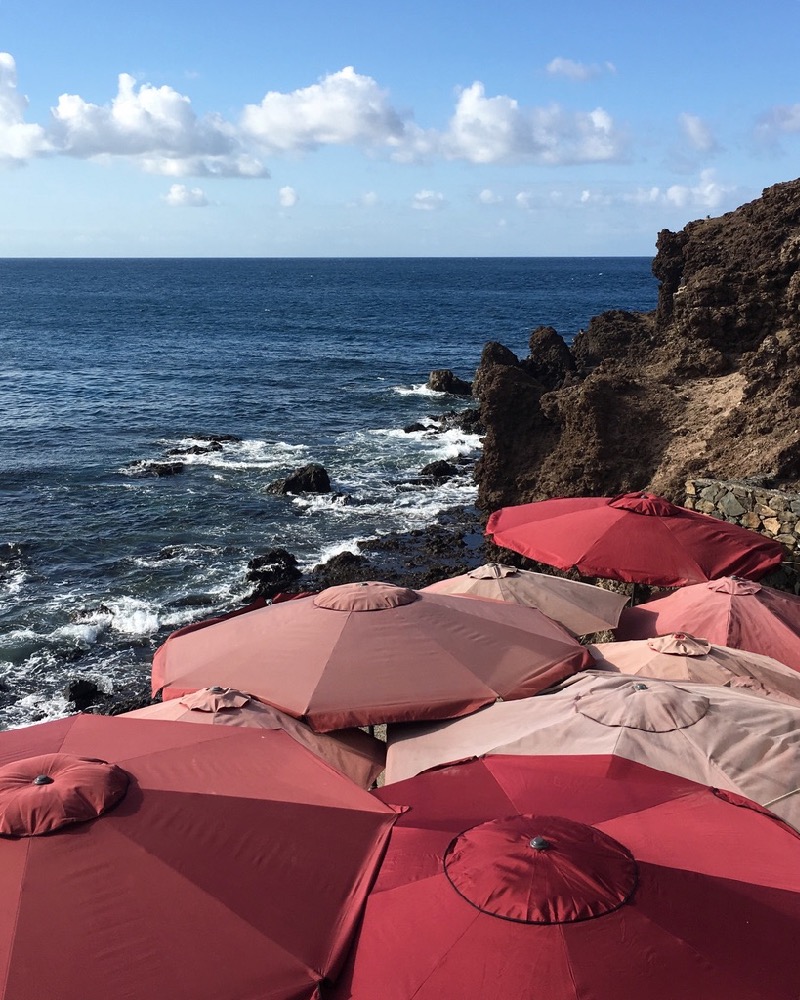
That day she took us to her favourite restaurant, Hornos de la Cal, right by the sea, on a terrace covered by coral umbrellas.

She even told us to forget the menu, she would order for us delicious squid and rice cooked in its ink. While we waited for our food she told me something which I found fascinating. Because of the many micro-climates of the Canaries, in previous centuries local nobles would often have an unusually large number of country houses, moving from one to another as these ‘mini seasons’ changed.

On the way back to her village she asked to do two stops. The first one to show us the beach where she confessed she spent hours and hours of delicious leisure. I divined a certain nostalgia in her voice when she spoke about the endless hour she said she had spent there.

Shamefully I do not remember the beach’s name now.
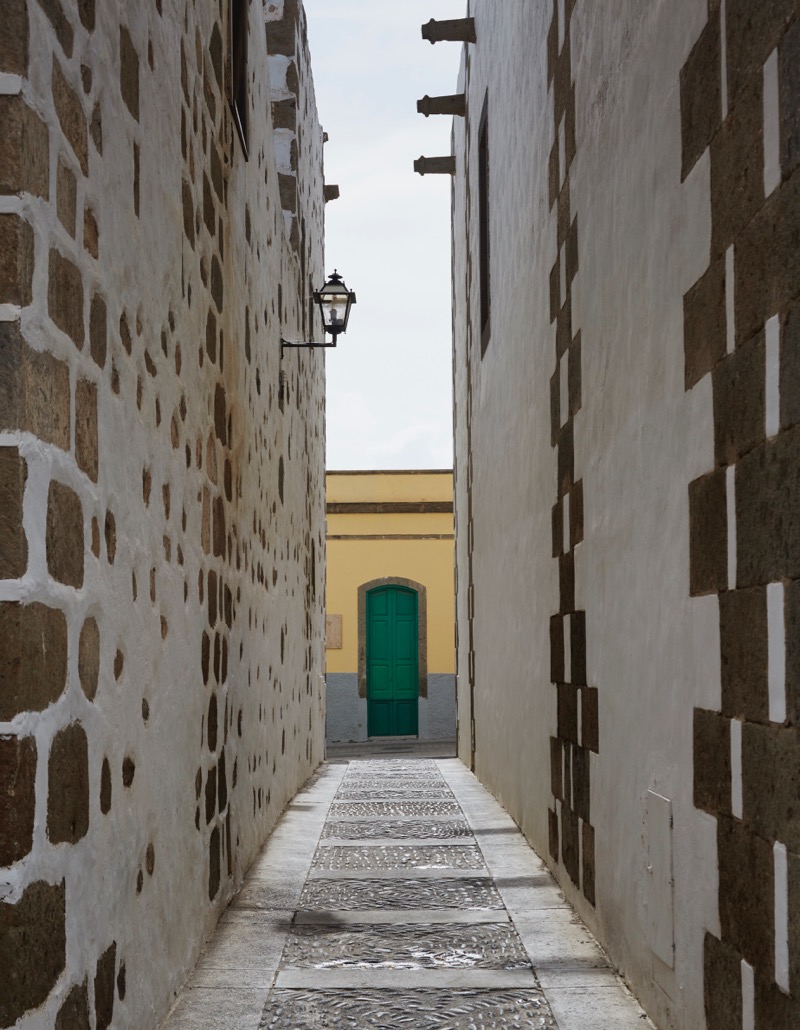
The second stop was in Aguimes, the village next to her own, a town full of rather beautiful, if severe architecture. It felt empty, ghostly, a bit like a Surrealist painting.
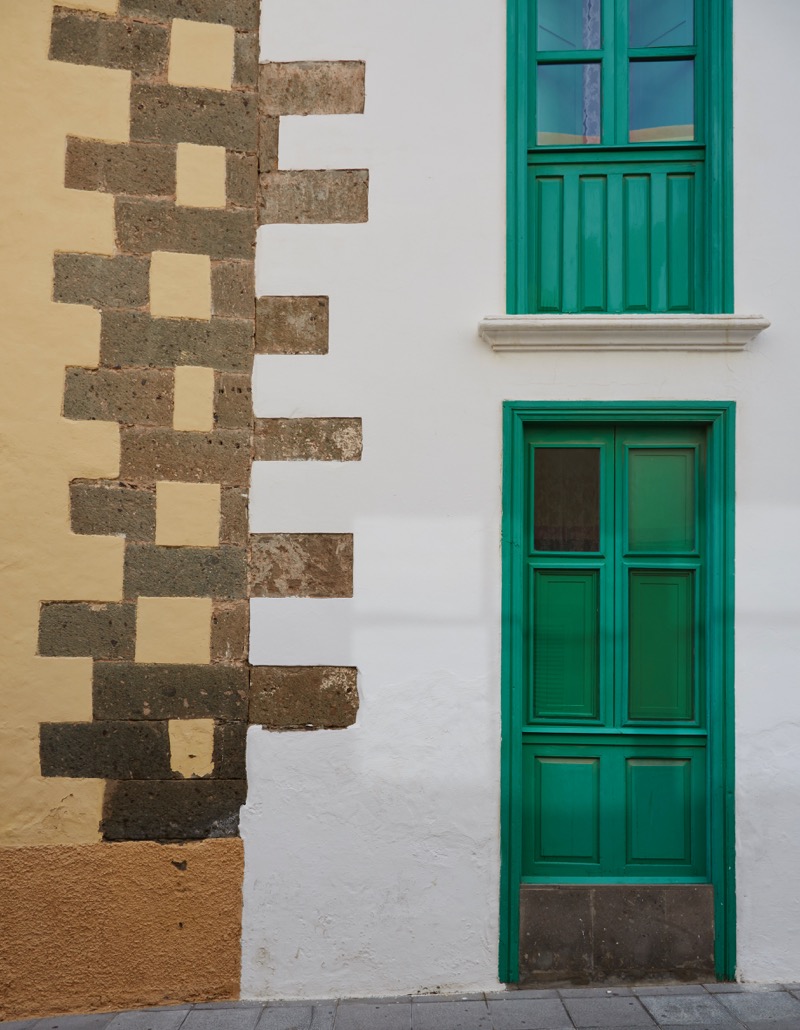
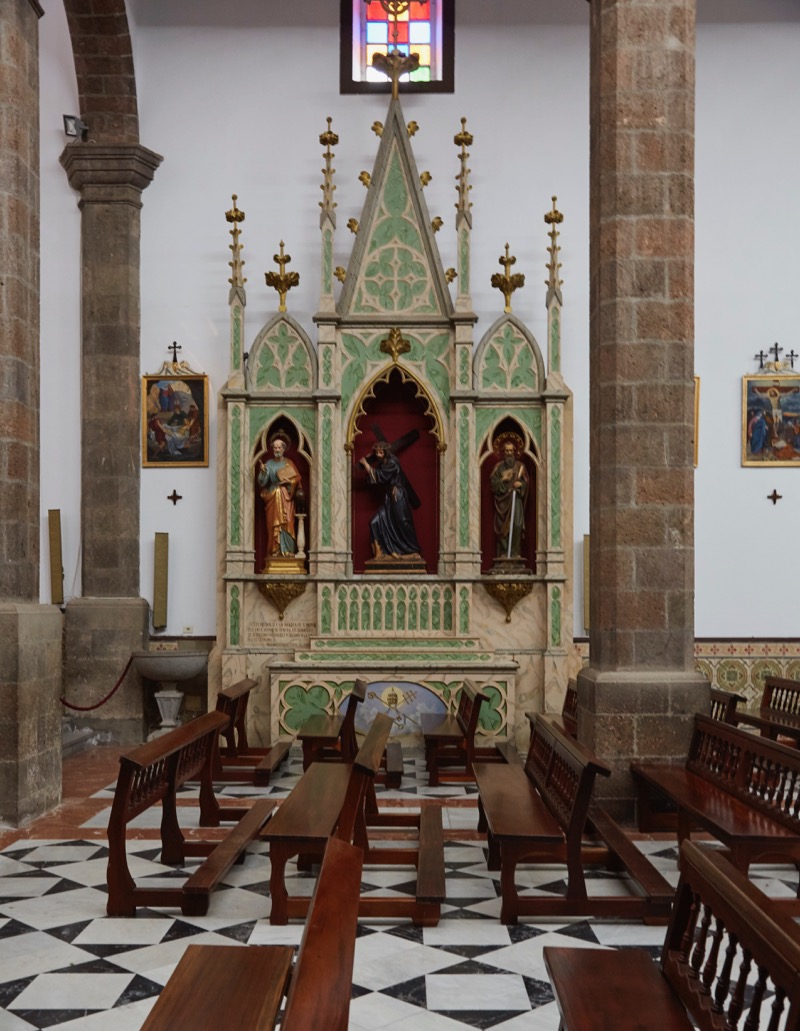
When we got to her village, Ingenio and just before we left her home, we went back to Bar Paco. She wanted a coffee, after which she told us to go see the church across the street, telling us to make sure we paid attention to the neo-gothick retables at each side of the nave. She adored the playfulness of the retablos in contrast to the stark severity of the church’s architectural features.

The following day Min asked us to pick her at her home. ‘We will first go to the bakery, and after that I have some surprises, and then we will come back home for coffee and bread ‘y mantequilla’, she told me, using the Spanish word for butter. She adored the bakery asking me to take a picture of its owners as they took a batch of bread from the brick oven.
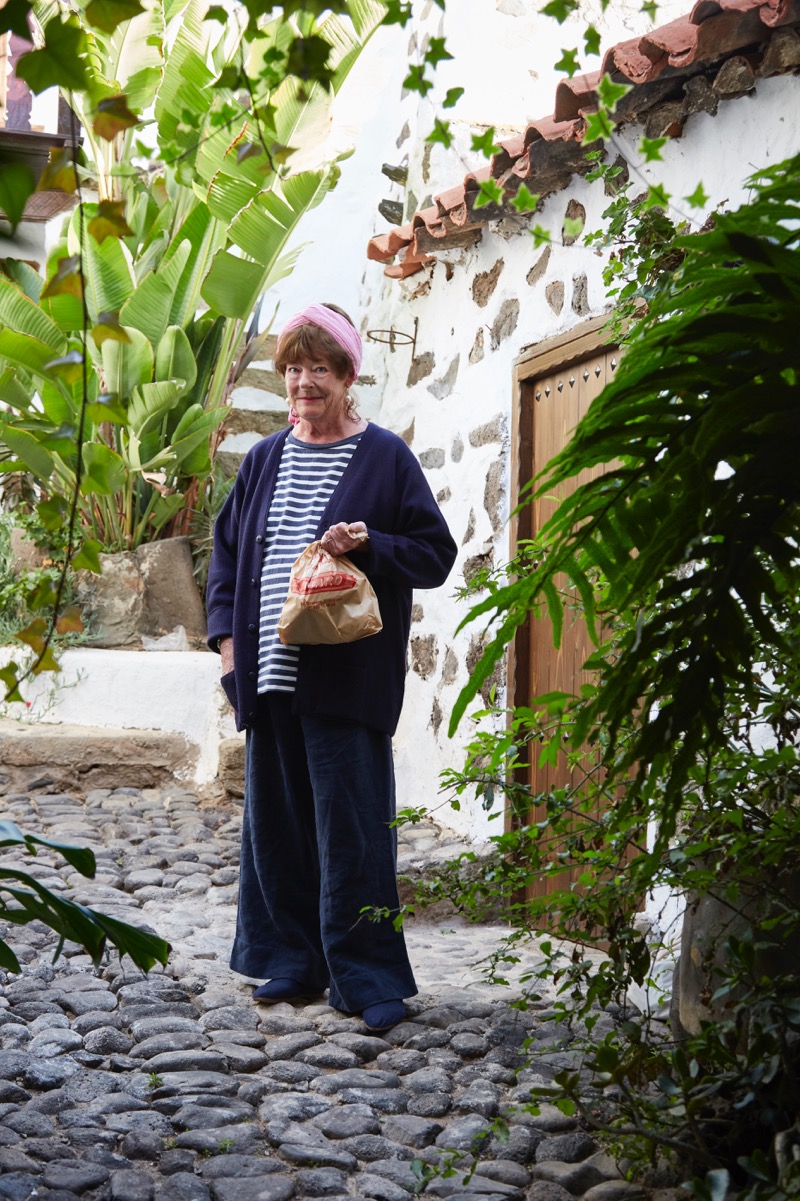
I feel she felt a genuine admiration for people doing this type of manual, immemorial job and they, in turn, clearly felt her respect for their metier. Seeing Min and the bakers talking about this and that, one could not help but feel that it was a meeting of equals.

The surprises Min had promised were a tour of her housekeeper’s mother house. Untouched since I do not know when. Min loved it, especially the baby Jesus on some of the beds.

And after that we went to have a shot of vodka with her friends the brothers Esteban and Fernando Banus, they were the vodka producers and her Canarian ‘family’. I believe they would sometimes spend Christmas together and they all seemed genuinely fond of each other.
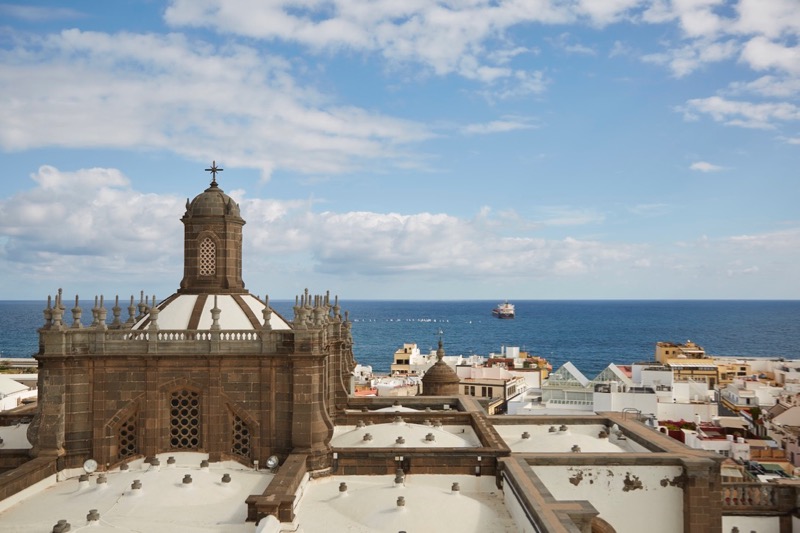
After breakfast in her place we headed to Las Palmas. I got the feeling that when on the Canaries, she tried to avoid big city life. Maybe she did not find the town interesting and could not be bothered to visit it often. Nonetheless, as the previous day, she had prepared an itinerary, starting with a climb to the cathedral’s campanile. The climb was for us, she stayed down below to smoke, but, as she had promised, the view was well worth it.
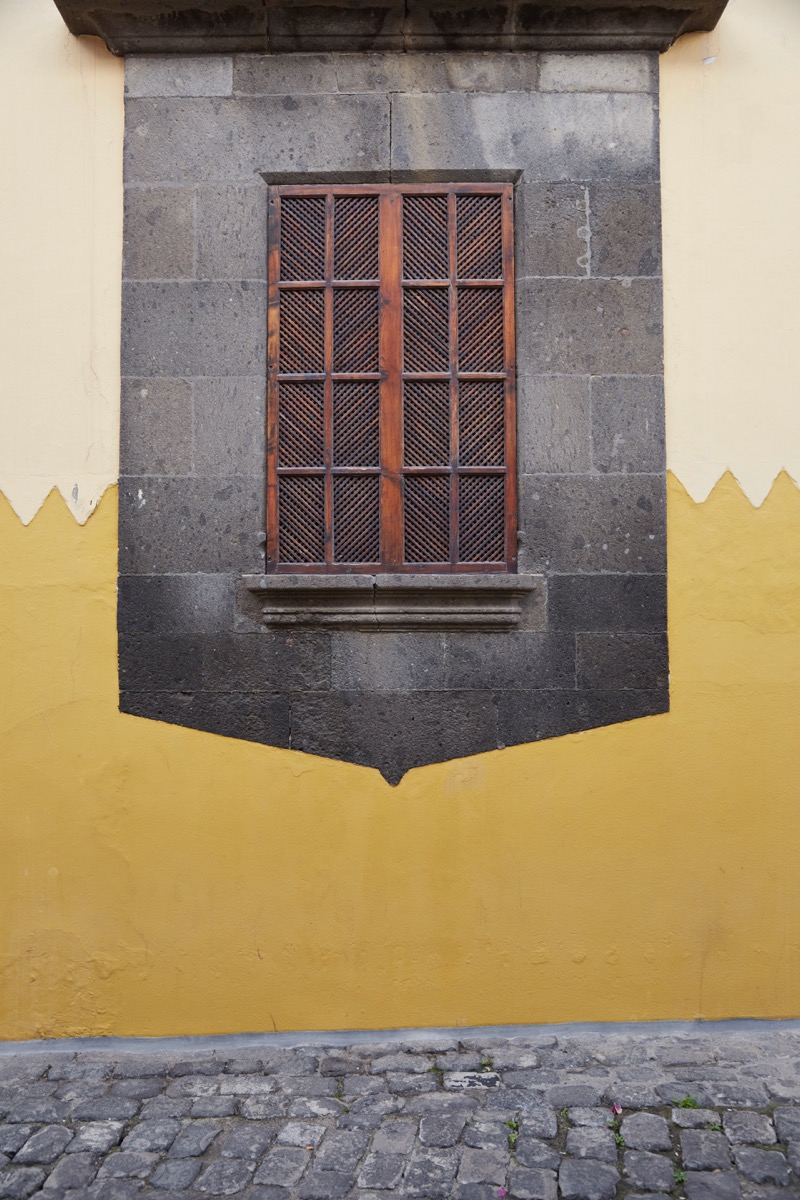
The Canaries was the last and first bit of Spain that travellers to and from the Americas saw. The accent of its people sounds more Venezuelan than Continental Castillian and Canarian architecture is closer to the Latin American colonial version than to the one in Andalucia.

Min was quite fascinated by all these bits of information which she dispensed freely as we walked the old town.

But – and these were the quirks of her personality that enchanted me the most – she became really excited, much more than when talking architecture, when we went to see a fruit seller in the Mercado Central. She loved the way he displayed the fruit. The place, admittedly, looked marvellous.

Before leaving Las Palmas Min wanted us to visit the Bolanos Family cheese factory. She insisted we take Canarian cheese to eat with the honey we had got the day before.
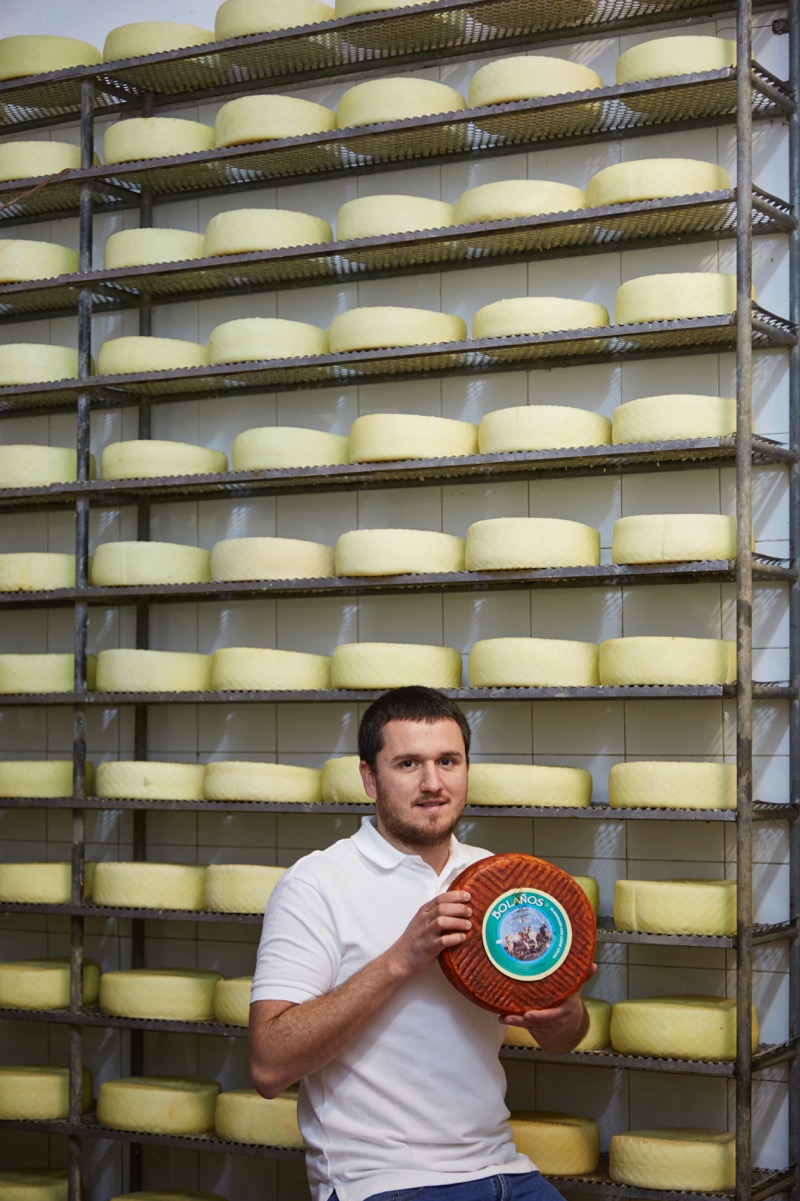
The Bolanos were her friends and, according to Min, to have their cheese with honey would be one of the best memories we could take from the island.

On the way to lunch, we stopped to admire all those strange beauties at the Jardin Botanico. I was starving but Min always found yet another specimen to show us.
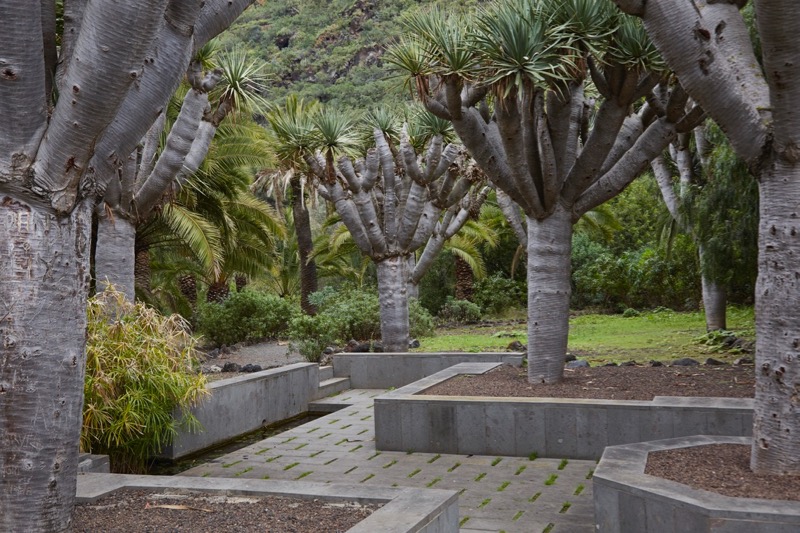
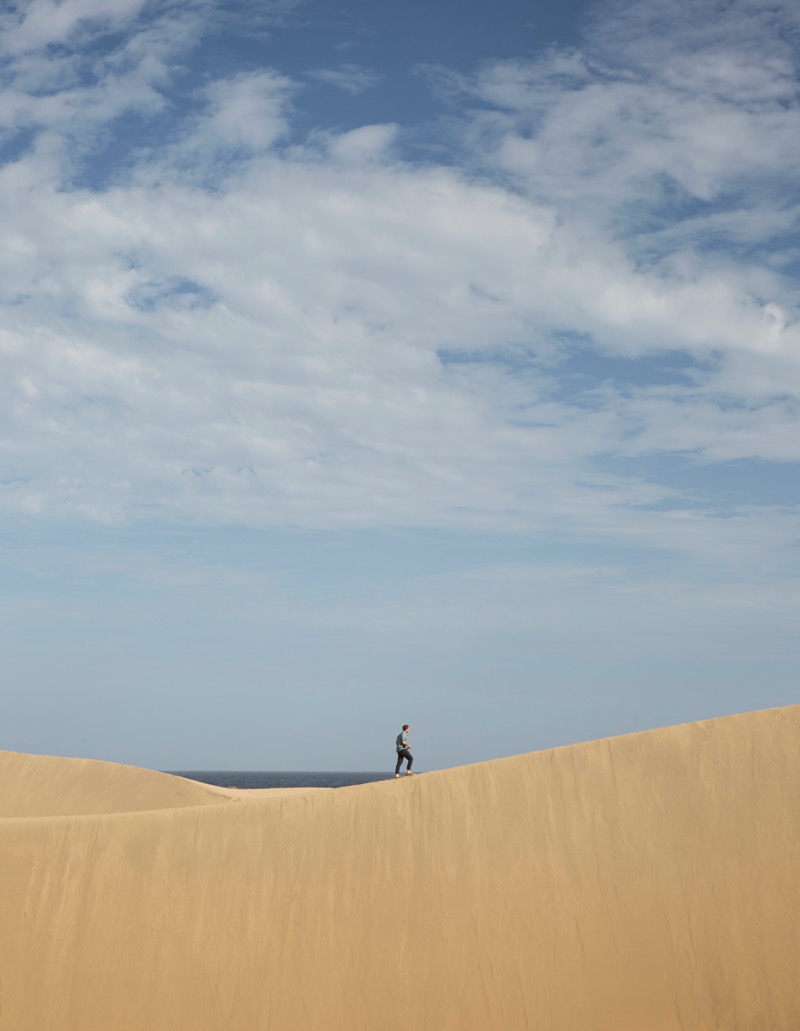
Lunch was to be at a place called Maspalomas. As the previous day had been such a success I did not even bother to ask or read about our destination. After about an hour of coastal road we arrived at a hideous, humongous hotel, filled with tourists with lobster skin. There were several restaurants, each one worse than the others. Min chose one on a terrace and we sat down to eat some pneumatic fish and potato chips. With a poker face Min kept on going about ‘marvellous Maspalomas’. I did not understand it. After some rancid ice cream, which she just played with, she said ‘I am going to stay here to smoke, but you boys now have to follow that path and you will see why we came here’. We did and by the time we reached the end of the discouraging water park, between the last toboggan and the sea were miles and miles of endless gigantic dunes… Min, clever as she was, pretended for the length of that long lunch hour that somehow the hotel was the destination and never mentioned this sandy final treat she had in store for us. The picture above is of my friend Brett Wood, finally, in heaven.
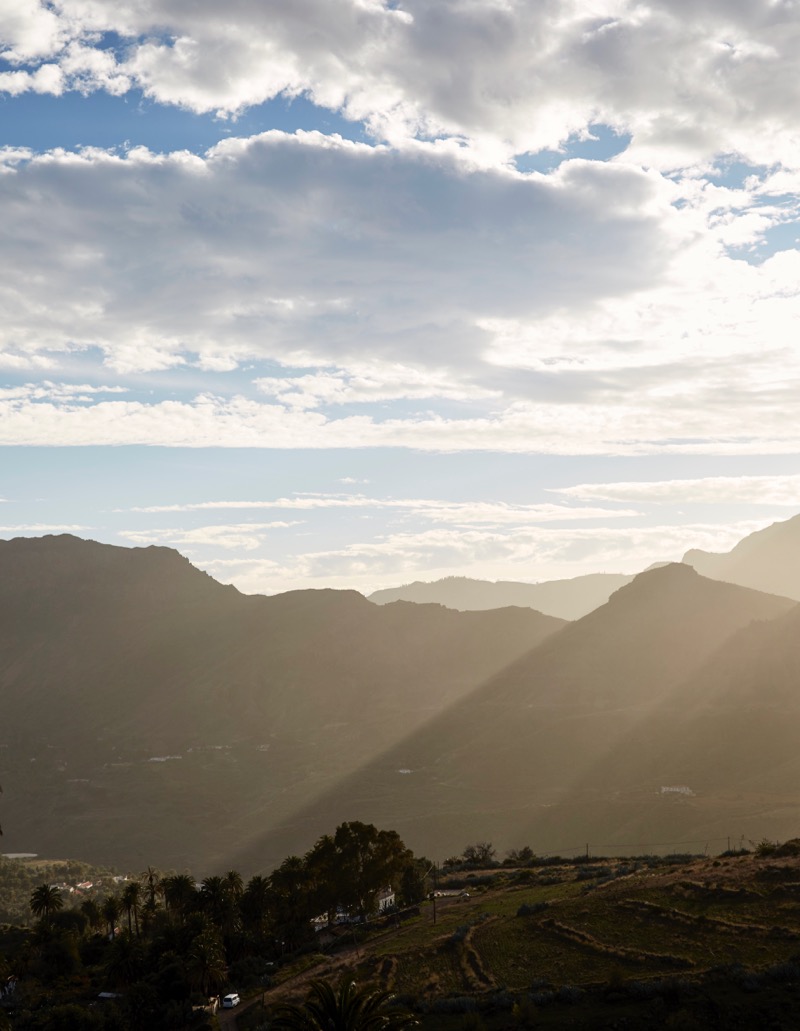
After the frolics in the Dunes we headed back to Min’s house, it was almost the end of the afternoon and she wanted to go across the island through the beautiful mountain passes. Min often asked to stop the car to show us the scenery, an ancient landscape, wild, forlorn, full of mystery and like her, full of unexpected surprises.
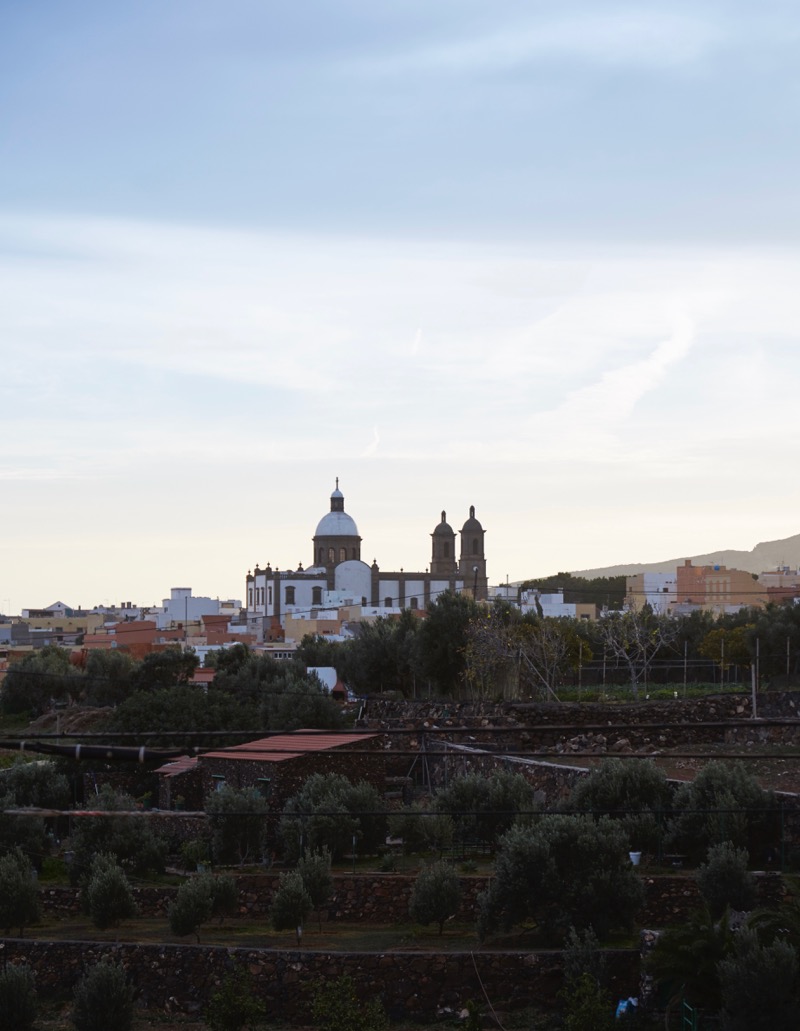
It took almost two hours to get her home. She had to pack as she was heading back to London. We also had to pack, we were heading to Morocco to meet up with Christopher Gibbs, but that, that is another story.
@miguelfloresvianna has been a photographer and writer and editor for more than twenty years. He is the author of A Wandering Eye, Travels with my Phone, and Haute Bohemians (Vendome Press)
All photographs copyright Miguel Flores-Vianna and my very grateful thanks to him for writing this.

It is The best reportage i have ever seen of Gran Canaria!!!! Min was a wise & adorable lady!!!
What marvelous memories this brought back to me. I lived as a child in Tafira Alta in the 60’s. Gran Canaria was and still is magical.
Miguel, what a treat you have shared with us! What an interesting person. I love your work ever since I first encountered you on Ina Garten’s show.
Oh – what a treat. Thank you Miguel and Ruth! Splendid.
Thank you for your fascinating record of a wonderful lady and a great adventure
Many thanks for this wonderful report and the photos about Min Hogg (I’ve adored her for a long time, I own her first book, it’s my Bible) and about Gran Canaria, my second home. I live here half of the year in Pasito Blanco and drive to the mountains as often as possible. I would love to visit Min Hogg’s house, do you know the exact address (I was already in front of Paco’s Café, but I couldn’t find her house) and know who it belongs to now, I would want to buy it. Kind regards, Cristina.